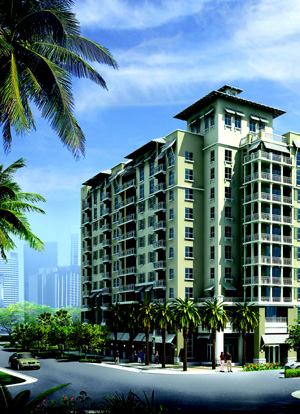RENTAL RESURGENCE On the flip side, the South Florida apartment rental market has rebounded. With so many units sold to condo converters, the reduced supply of apartments that remain are in strong demand, with occupancy rates often topping 95 percent and double-digit increases in rental rates, McCabe says.
Apartment companies and their investment partners are noticing. “There’s a lot of capital chasing multifamily real estate,” says Michael Bippus, vice president of acquisitions for Berkshire Property Advisors, headquartered in Boston, which owns two apartment complexes in South Florida, and is on the lookout for more. (For more on Berkshire Property Advisors, see the March issue of MULTIFAMILY EXECUTIVE.)
Brad Capas, who co-leads the multifamily brokerage services team for Cushman & Wakefield out of Fort Lauderdale, says there’s a renewed interest in the rental apartment market from corporations, pension funds, and real estate investment trusts. For the past several years, these traditional investors were kept out of the multifamily market by condo converters, who offered top prices at the market’s peak, paying as much as 30 percent more for a property they intended to take condo than an apartment firm might have.
Condo conversions haven’t dried up entirely. Michael Lerner, president of Chicago-based MCZ Development, has converted a number of Florida projects, including Flamingo South Beach, with about 1,800 units on Biscayne Bay. Miami Beach “is still a vibrant market. There’s a limited amount of product,” he says.
Lerner is drawn to conversions due to their better value because construction costs are so high, with new high-rises costing $400 per square foot to build. In addition, with new construction, “you have to anticipate where the market is going to be,” he notes.
Given says he still gets calls every week from converters who want to buy apartment buildings at the lowest price point of $100,000 to $150,000 per unit, with plans to sell them for $200,000 to $300,000 per unit. “It’s not the dizzying pace you saw 24 months ago, when guys were changing the price every hour, but it’s still good.”
But some converters are struggling, Capas says. They may have cleared out residents who were renting units in order to convert them, and now can’t sell the units, so they are reverting back to rentals. Such reversions are particularly common in northwest Broward and north Palm Beach counties.
In other cases, speculators who bought condos to flip and haven’t been able to resell them are renting out the units, creating a shadow apartment market in South Florida.
With so many Class A buildings scooped up during the conversion craze, A-minus and B-plus rental properties are the ones in demand by multifamily buyers, Given says. For two properties CB Richard Ellis has on the market, there have been requests for information from 150 to 200 groups.
Interest in South Florida multifamily properties remains high because the basic fundamentals—job growth and population growth—are still strong, says Ed Malone, regional vice president for Houston-based Camden Property Trust, which has seven communities in South Florida.
Many of Camden’s garden-style competitors went condo, so in places like Plantation, Fla., “we find ourselves without competition,” Malone says. That’s not always the advantage you might expect. One of Camden’s biggest challenges has been “making sure everyone knew we weren’t condo,” he notes.
Displaced renters who did know that information have flocked to Camden’s properties, pushing average occupancy rates above 96 percent, while rents have increased by about 10 percent annually, Malone says. Camden is also looking for new properties to acquire—the days of building new garden-style apartments are in the past, according to Malone. “I don’t see that right now. It’s all about density due to the cost of land.”
At the same time, “the affordability of single-family homes is out of reach of many people,” says Jeff Elowe, president of the Chicago-based Laramar Group, which has recently returned to the South Florida market with the purchase of the Hillsboro Bay Club in Coconut Creek.
Berkshire Property Advisors is on the same track, looking to increase its holdings in South Florida. The company sold off apartment complexes in Fort Lauderdale and Pompano Beach because condo converters “made us an offer we couldn’t refuse,” Bippus says. Now Berkshire is looking for properties from the late 1970s to mid-1990s that the company can renovate into high-performing rental communities.
Susan Ladika is a freelance writer in Tampa, Fla.
